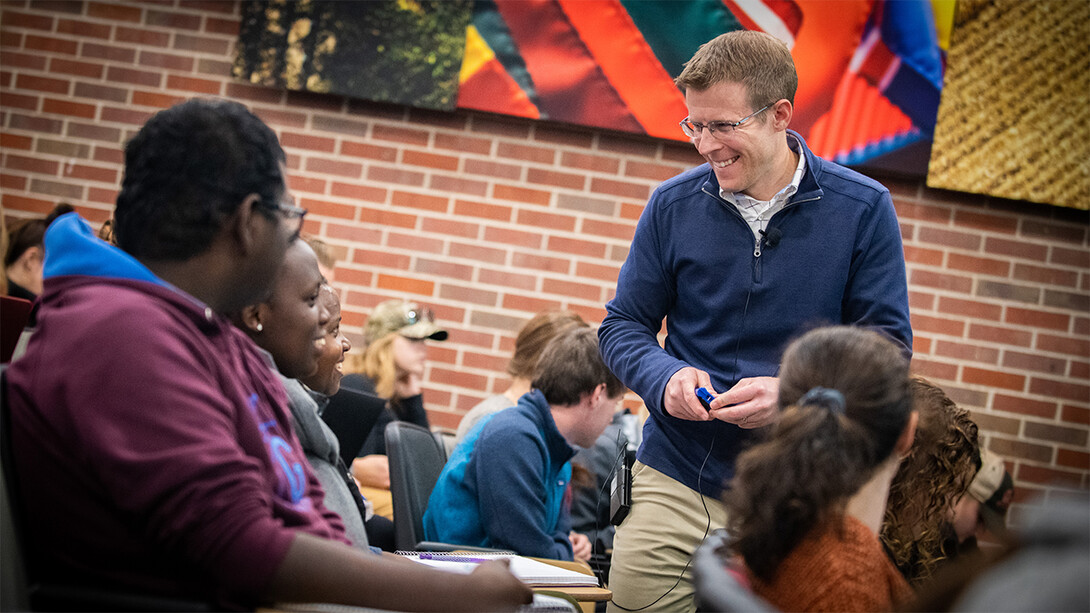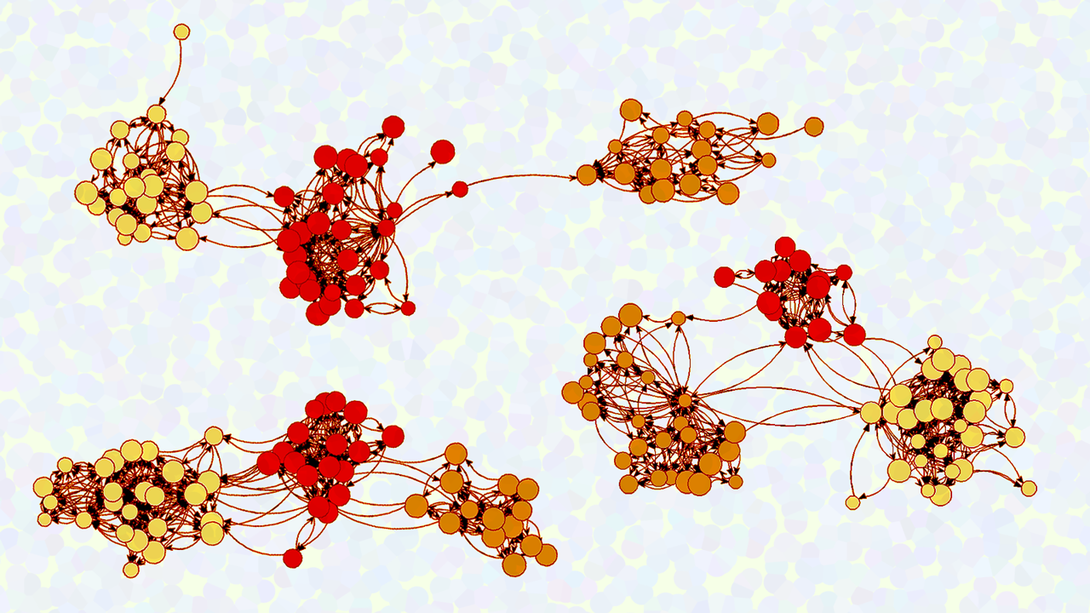
Eager to learn the latest in instructional practices that research says will better engage and educate her students, an assistant professor of biochemistry attends a virtual workshop devoted to exactly that.
A seminal theory proposed in the mid-20th century would suggest that she, as an early adopter of the innovations, might share them with fellow faculty in her department, maybe in her college, possibly even across her university. New research published in Proceedings of the National Academy of Sciences indicates that she will, too — but probably just with the choir of faculty who are already practicing what she’s preaching.
Surveys and network analyses of 192 STEM faculty at the University of Nebraska–Lincoln, University of South Florida and Boise State University revealed that frequent users of evidence-based instructional practices are far more likely to engage one another than colleagues less familiar with the practices.
The finding suggests that faculty networks alone are not enough to disseminate and drive the adoption of evidence-based practices that could improve undergraduate instruction and address inequities for students historically underserved by STEM classrooms.
“The idea has been that you could spread knowledge by capturing a smaller group of people, and that would then propagate out from that small group to the larger department,” said Brian Couch, associate professor of biological sciences at Nebraska. “But if we’re thinking of these people as having specialized knowledge that would be of value to the rest of the department, then the existing social structure is not providing robust channels for that information to be spread.
“It’s really allowing those high users to reflect and learn from each other, but there’s not a lot of evidence that the information is getting outside of that group.”

Led by the University of Minnesota’s Kelly Lane, South Florida’s Luanna Prevost, the University of Virginia’s Marilyne Stains and Couch, the research team also conducted in-depth interviews with 19 of the STEM faculty who reported regularly using evidence-based practices in the classroom. When explaining how they decide which colleagues to engage in teaching discussions, 58% of the interviewees said they seek out peers with similar teaching values, and 37% cited expertise or experience as a reason to reach out. Just 5% said they engage colleagues specifically because those colleagues conduct similar research or have similar faculty appointments.
“The categories that seemed to be driving interactions between people were more about values and expertise — things that people might have regardless of where they’re teaching or what they’re teaching — whereas the categories that weren’t as highly cited were more structural or could be assigned to a faculty member,” Couch said. “So it was really more about shared philosophy rather than obligations or other happenstance reasons that they’d be connected to each other.”
Numerous instructional practices have held up to rigorous evaluation across dozens or even hundreds of studies throughout recent years, Couch said, making them among the most proven and promising ways to support learning in STEM classrooms. Chief among those are active-learning strategies that eschew or demote traditional lecturing in favor of organizing students into groups, asking those groups to answer relevant questions, then having them discuss and share the thought processes that yielded those answers. Another well-supported practice, just-in-time teaching, involves adapting instruction on a week-to-week or even class-to-class basis, depending on how students answer curriculum-specific questions posed prior to classes.
Some of those practices appear to especially improve outcomes for underrepresented and underserved populations, including students of color, first-generation students, and those from low-income backgrounds.
“The excitement behind them, and the reason a lot of different agencies and institutions are trying to promote their use, is because we know there are deficiencies in education — that business as usual produces outcomes that are lower than we would want, that are inequitable in different ways for different groups,” Couch said. “So finding teaching practices that can help address some of those issues is valuable.”
But finding those teaching practices means little without also figuring out how to increase their implementation in higher education, said the researchers, who proposed several ways to do it. One of them — prompting conversations by asking two or more faculty to co-teach a course — is especially appealing because many institutions are familiar with it and already incorporating it to some extent.
“Many departments have an introductory course series with different faculty teaching different sections, and there has to be some level of coordination across those sections,” Couch said. “That’s a place where people have cause to talk. And maybe with a little more deliberateness and intentionality around those teams and those relationships, we can start to engage broader faculty in conversations. That feels like an area that is ripe for advancement and maybe just needs a little more follow-through.”
Another potential solution: incentivizing the adoption of evidence-based practices to a degree that they simply are not at most institutions, the researchers said. That lagging incentive structure might help explain why the diffusion of innovation theory, which often captures the dissemination of technologies whose benefits are obvious and immediate, fails to do the same for instructional practices.
Given that institutional and departmental leaders influence the hiring, promotion and evaluation of faculty, along with the allocation of resources, the researchers said those leaders also have the power to make evidence-based practices a larger priority on campuses. Establishing or changing a culture of teaching in less direct ways could likewise go a long way, the team said.
“We know that leaders have a strong voice in where people are teaching and what they’re teaching and what types of expectations are on those teaching,” Couch said. “Those leaders, as they’re thinking about teaching assignments, mentoring networks, junior faculty and so on, can be really deliberate about how to find structures that would keep people engaged — to maintain cohesiveness and not let the nodes in the network get too dispersed.
“We need to be thinking about these alternative ways of engaging faculty and helping them develop their teaching through their relationships, rather than just incentives that they would receive or not receive based on some outcome.”
The good news? Just as research has shown the need to facilitate conversations between faculty who do and don’t use evidence-based practices, it also suggests that the faculty who do converse are both better for it, Couch said.
“What’s neat about it is: If a low user and a high user talk to each other, it’s not that the low user becomes more like high user, and a high user becomes more like a low user,” he said. “What we actually see is that both of them can shift together in the same direction. There appears to be an influence of who you talk to, and that influence can be positive for both parties.”
Lane, Prevost, Stains and Couch authored the study with South Florida’s Jacob McAlpin, Stephanie Feola, Jennifer Lewis and John Skvoretz, along with Boise State’s Brittnee Earl, Karl Mertens, Susan Shadle and John Ziker.
The researchers received support from the National Science Foundation and NebraskaSCIENCE.







